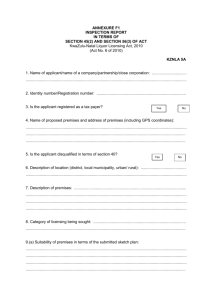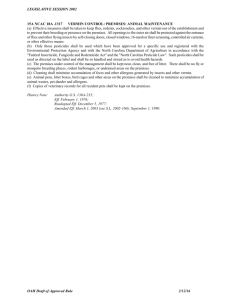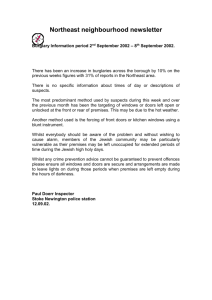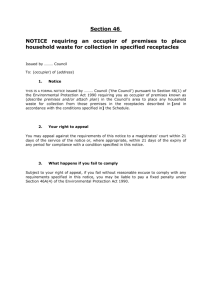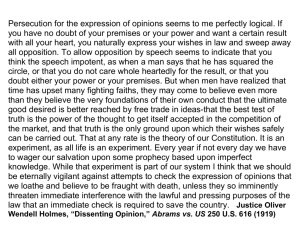Health Approval Kit - City of Port Phillip
advertisement
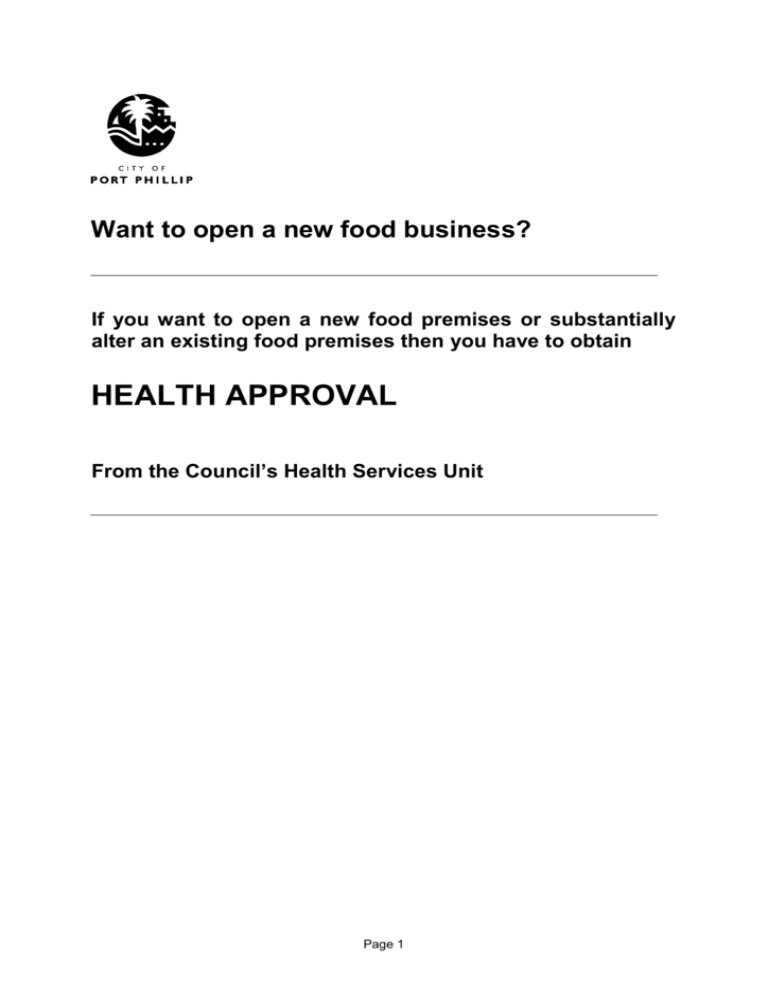
Want to open a new food business? If you want to open a new food premises or substantially alter an existing food premises then you have to obtain HEALTH APPROVAL From the Council’s Health Services Unit Page 1 What is Health Approval? Health Approval is a process whereby you submit to the Health Services Unit: 1. An application form and food premises classification form (copy attached); 2. Floor plans (2 copies of draftsman standard) showing the proposed internal layout of the premises including kitchen, food storage areas, outside rubbish and waste storage areas; 3. Detailed specifications describing all fixtures construction materials to be used in the kitchen. and The Council then assesses these plans and specifications to see if they meet our requirements. Assessment takes less than one week and you will be notified in writing of the results. Almost all applications are approved. Please note: All food premises are classified by their local Council according to their highest risk activity. The classification system means that regulatory requirements are better matched to the level of food safety risk. Council will determine what class your premises is as part of the Health Approval process and will advise you of what it means for your premises. The table on page 11 of this document provides a brief summary of the classification system and the different requirements for each class. Further information is available at www.health.vic.gov.au/foodsafety. Page 2 Specification Checklist Before you begin… You may only answer questions which are relevant to your proposed operation. Make sure you answer the questions fully. Please provide detailed answers on a separate sheet of paper. YES or NO answers are insufficient. Use the statements underneath each question as a guide to providing a complete answer. 1 Premises Information 1.1 What types of food are prepared, cooked, stored or sold from the premises? 1.2 What is the maximum number of customers that will be seated for meals? The number of seated customers you plan to have determines how many toilets you will need, or vice versa. This is controlled by the Building Code of Australia. Consult the Building Department on 9290 6253. A Planning Permit will be required for a car parking dispensation. Parking requirements are dependant on the number of seats within the premises. Consult with the Planning Department on 9209 6881. 2 1.3 What is the maximum number of staff that will be working at any one time? 1.4 Please complete the attached Food Premises Classification Checklist and submit with your application for Health Approval. Floors 2.1 Describe the type of floor surface to be provided. The floor must be smooth, durable, even, light in colour, impervious (water proof), free from open cracks and joints and able to be easily cleaned. Typically approved floor include ceramic tiles, quarry tiles, vinyl tiles and sheet vinyl with welded seams. Surfaces NOT approved include bare concrete, bare wood, carpets, carpet type mats which cannot be readily cleaned. Page 3 Specification Checklist 2.2 Is a floor waste drain required? If so, describe where it/they will be located. Floor wastes drains should be considered wherever large volumes of water are required in the cleaning process such as large restaurant kitchens. The floor will need to be graded so that water flows to the drain. NOTE: If a floor waste is not required then it is reasonable to assume that your floor will be thoroughly cleaned using a mop and bucket. The mop will need to be cleaned and sanitised and water from the bucket will need to be disposed of through the sewerage system. Please refer to Section 13 of this document. 3 Walls 3.1 Describe the material the walls are to be finished in. Walls in preparation areas must be smooth, durable, impervious to water or oil and able to be easily and effectively cleaned. Typically approved wall surfaces include glazed tiles, stainless steel, aluminium and smooth sealed plaster. When plaster is used, the surfaces should be finished in a light colour, washable, durable paint. All wooden surfaces (e.g. door frames) must be sealed. Skirting boards are not permitted. 4 Ceilings 4.1 Describe the material the ceiling is to be finished in. The ceiling must be smooth, nonporous sealed plaster or similar material which is painted in a light colour. Drop panel ceilings are not permitted in food preparation and cooking areas. 5 Benches, Shelves, Fittings, etc. 5.1 Describe the finish to be used for benches, shelves, etc. All fixtures and equipment must be adequate for the production of safe food and fit for their intended use. They must be smooth, durable, impervious and able to be easily and effectively cleaned. They must be free from open cracks and joints. Sealing benches to walls or other fixtures with silicon should be considered to prevent cracks and gaps where food scraps could build up. Approved surfaces for shelving include stainless steel, plastic, solid core sealed timber and laminate. Page 4 Specification Checklist 6 Cooking and Heating Appliances, Refrigerators and Freezers, Hot and Cold Display Units 6.1 Describe where these appliances are located. Show them on the plan. Domestic equipment is not approved for commercial purposes. All of these appliances must be located and installed as to allow for easy and effective cleaning of the equipment itself and also the floors, walls and ceiling around the equipment. 6.2 Describe whether the cooking appliances will be sealed to the floor and walls or alternatively on legs and away from the wall. As a guide, all appliances should be 150mm away from any wall or sealed to the wall. They should also be on legs of 150mm or on heavy duty castors which allow for easy moving of the appliance for cleaning. Where cooking and heating appliances must be butted against walls or the equipment (eg other cooking appliances), all joints should be effectively flashed or sealed in such a manner as to eliminate any joints or crevices which allow liquid or food residue or dirt to collect. Where silicon is to be used, only heat resistant silicon is acceptable. Metal flashing is preferable. Appliances must meet requirements in order to facilitate easy cleaning around and underneath them. 6.3 A thermometer is required to be on site to verify the temperature of foods held in refrigerators and hot and cold display units. Page 5 Specification Checklist 7 Coolrooms 7.1 Describe where the coolroom is located. Show location on the plans. 7.2 Describe the type of floor surface to be provided in the coolroom. Coving is required in the coolroom. 7.3 The floor must be smooth, durable, even, impervious, light in colour and free from open cracks and joints. Typically approved floors include ceramic tiles, quarry tiles, vinyl tiles, sheet vinyl with welded seams, epoxy finish. Surfaces NOT approved include bare concrete and bare wood. 7.4 Describe the materials used to construct the shelves within the coolroom. Storage racks must be corrosion resistant and able to be easily cleaned. Timber frames should not be used. 8 Mechanical Exhaust Systems 8.1 All cooking and heating appliances with a power rating over 8kW must be located under a mechanical exhaust canopy. Please show the location of the canopy on the plans. Stoves, ovens, pizza ovens, provers, salamanders, etc. must all be located separately under a canopy. The installation of the canopy must be in accordance with the Australian Standard No 1668. Cooking equipment must not extend outside the catchment area of the canopy. Include a statement or details from your canopy manufacturer that describes how the canopy will be installed and meet the requirements of Australian Standard No 1668. Further details about the standard are available from Council Health Services Unit. 9 Hand basins 9.1 Describe where the hand basin(s) are located. Show the locations on the plans. Kitchens may require more than one hand basin, depending upon the layout and design of the business. A food premises must have hand washing facilities that are located within areas where food handlers work and specifically where they can be easily accessed. Page 6 Specification Checklist They must be provided with hot and cold water delivered by a single mixing device. The basin must be of a reasonable size that allows for easy and effective hand washing. Larger kitchens or those with several food preparation or food handling areas will require more than one basin. Separate hand basins must be provided for toilets. Liquid soap and hand drying facilities must also be provided. 9.2 Describe what type of hand drying facilities will be provided. Single use disposable paper towels are the preferred option. 10 Sinks 10.1 Describe where the sinks are located. Show location on the plans. As a guide, a double bowled commercial grade sink is required, separate from the wash hand basin, for the washing of equipment and utensils. Hot and cold water must be provided. Sinks must be large enough to accommodate the largest utensil being used. Dishwashers capable of sanitising may be utilised instead of sinks. An additional food preparation sink may be required where the frequent washing of fruit and vegetables is required. 11 Lighting 11.1 Describe the type of lights have you used to ensure that effective lighting is provided for the activities conducted in the premises. Include a general statement on the plans. 12 Refuse/Waste Disposal/Cleaners Sink 12.1 Describe where the rubbish bins are located for the temporary storage of refuse. Show locations on the plans. 12.2 Describe where the waste disposal area for the storage and cleaning of refuse bins, cleaning mops, buckets, etc is located. All food premises must have a waste disposal area where the bins, cleaning mops, buckets, etc are stored and able to be cleaned. IMPORTANT: This area, usually outside, must be large enough to accommodate the number and type of bins your business requires. Page 7 Specification Checklist You must have access to an area designed for washing out your bins, cleaning mops and buckets. In some cases a cleaners trough may be adequate but in most situations a smooth concrete floor which is graded and drained to the South East Water sewer will be required. Access to hot and cold water taps is required. A FEW POINTS TO KEEP IN MIND Bins must be stored on your property Your empty bin must be returned to your property as soon as possible after collection. Please all rubbish in leak proof bags. Private contractors are permitted to collect rubbish between 6.30am until 8.00pm Monday – Saturday and between 9.00am and 8.00pm Sundays and public holidays. 13 Sanitary Conveniences 13.1 Sanitary conveniences must comply with the requirements of the Building Code of Australia. Sanitary conveniences should not open directly into any room in which food is manufactured, prepared, stored or sold. Self closing devices are required on doors. Contact the Building Department on 9209 6253. 14 Vermin/Insect Proofing 14.1 It is the proprietor’s responsibility to ensure that all reasonable precautions are taken to ensure that their premises remains insect and vermin proof. All kitchens and food preparation areas must be constructed and maintained to exclude and prevent the harbouring of flies, insects, birds and vermin. Where service pipes pass through walls or ceilings the area immediately surrounding the pipe must be effectively sealed. All external doorways must be provided with close fitting self closing doors. All external windows which are capable of being opened must be fitted with insect screens which exclude access by flies and other insects. Where insecticutors are used, care should be taken to install them in a suitable area away from any exposed foods. Page 8 Specification Checklist 15 Registration of your Food Premises 15.1 Once the new premises has been constructed, an Environmental Health Officer will visit the site to ensure it has been built in accordance with the approved plan and specifications. Provided this is the case, the Environment Health Officer will supply you with an “Application to Register” form which you need to complete and return to Health Services Unit before you may begin operating. Health Services Unit City of Port Phillip Offices located at: Postal Address: St Kilda Town Hall Private Bag 3 Cnr Brighton Rd and Carlisle St ST KILDA VIC 3182 PO ST KILDA VIC 3182 Phone: 9209 6292 Urban Planning and Building If you wish to open a restaurant, café, reception centre, etc you may require a Planning Permit. Any substantial building works, such as the installation of a canopy, may also require a Planning Permit and a Building Permit. It is the applicant’s responsibility to ensure all relevant permits are obtained. Contact the Planning Department 9209 6424. Contact the Building Department on 9209 6253. Page 9 The Greasy Waste Program A special initiative for the catering and food preparation industry Because of major concerns about the increasing amount of grease entering our sewers, South East Water introduced the Greasy Waste Program. This unique initiative was specially designed for the needs of the catering and food preparation sectors, including takeaway shops, canteens, motels, butchers and restaurants. A serious problem Grease is a serious problem, as it flows readily down the sewer in its liquid form but later solidifies and builds up in the sewer causing blockages. These blockages may cause sewage overflow into the environment, homes and businesses. Apart from causing blockages, grease cannot always be fully removed by sewage treatment plants and passes through into the environment where it can contaminate streams and beaches. New requirements As a condition of the Trade Waste Agreement, catering and food preparation businesses are required to install a grease trap. The grease trap captures fats and food particles before they enter the sewerage system, which helps to prevent sewer blockages. The grease trap must be maintained on a regular basis to ensure it operates effectively. This involves the regular removal of grease from the grease trap by a waste transporter. The Transporter must have an Environment Protection Authority permit to be eligible to perform this task. A brochure describing the Greasy Waste Program in more detail is available from any South East Water office, or by calling the number below. To arrange your Trade Waste Agreement Call 131 694 Page 10 Food Premises Classification System – Regulatory Requirements Class 1 Class 2 Class 3 Class 4 Risk Classification Handles, processes or serves ready-to-eat potentially hazardous food to groups most vulnerable to food related illness (e.g. hospital patients, nursing home residents, children in long day care Supplies potentially hazardous foods which need correct temperature control throughout the food handling process, including cooking and storage to keep them safe (e.g. restaurants and cafes) Supplies or handles unpackaged low risk foods or pre-packaged potentially hazardous foods which simply need refrigeration to keep them safe (e.g. milk bars or bread baking) and some community events Supplies low risk prepackaged foods which do not need refrigeration. Also sessional kindergartens where cut fruit is served, sausage sizzles where the food is cooked and served immediately, and cake stalls. Council Registration / Notification Required Registration Registration Registration Notification Choice of Food Safety Program Independent Food Safety Program including whole of business QA system; or Independent Food Safety Program including whole of business QA system; or Simple record keeping required No food safety program or record keeping required DH approved standard (not yet available) Simplified DH approved standard Food Safety Supervisor including other accredited training (e.g. chef); or Food Safety Supervisor including other accredited training (e.g. chef); or Not required Not required Via recognised QA system Via recognised QA system Choice of staff supervisor training Further information about the requirements for each of the four classes is available at www.health.vic.gov.au/foodsafety/guide/classification.htm or by contacting the Health Services Unit on 9209 6292. Document Number:HSU001 Application for Food Act Approval To: The City of Port Phillip Council. ABN 21 762 977 94 Name of Applicant: Address of Applicant: Suburb: Post Code: Phone No: Fax No: Trading Name: Shop No: Street Name: Shop Suburb: Post Code: Registration Type: Nature of Premises New: or Alterations to existing kitchen: FEE DUE: $ Signature of Applicant: ____________________________ Date: _____________ Office Use Only Plan Submission Date: Plan Approval Date: Approving Officer: Classification: Ledger No: Class 01.04624.9260 Registration No: This information is collected by the City of Port Phillip under the requirements of the Food Act for enforcement and Public Health purposes. It may be provided to the Department of Health for the same purposes, and for statistical purposes related to the application of the Act. It will be treated in compliance with CoPP Information Privacy Policy and the Information Privacy Act. Document Number:HSU001 Postal address Private Bag No 3 PO St Kilda Victoria 3182 DX 35706 Balaclava Enquiries St Kilda Town Hall Cnr Carlisle St & Brighton Rd St Kilda Victoria 3182 Phone (03) 9209 6777 Facsimile (03) 9536 2720 Food Premises Classification All food premises are classified by their local Council according to their highest risk activity. The classification of your business determines whether you need to register with the Council annually or provide a one off notification to Council of your activities. Please complete the following checklist to assist Council in determining the classification of your business: Name of Business: Address: Contact Person: Contact Number: 1. Type of food business (please tick): Nursing Home / Hostel Other (please specify) Delivered meals Hospital Child care centre Restaurant / Café Take away food outlet Retail food outlet (e.g. grocery store) Hotel / Bar with meals Hotel / Bar without meals Green grocer Bakery Caterer Home kitchen Convenience store / service station Canteen Supermarket Delicatessen Kiosk Manufacturer Wholesaler / distributor Before and After School Care Program 2. Please provide a brief description of your business: (e.g. ice cream shop, coffee roasting and distribution, bar serving tapas, supermarket with deli) 3. Do you handle packaged or unpackaged food? Packaged Unpackaged Both 4. Do you handle potentially hazardous food? (includes meat, fish, seafood, eggs, cooked rice, salads, dairy products, etc) Yes No 5. Is this a community run event? Yes Document Number:HSU001 No


